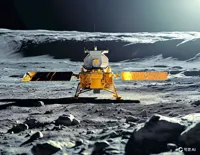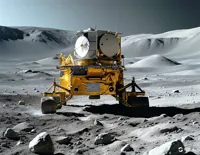







In the annals of human lunar exploration, the launch and successful execution of the Chang'e-6 mission stand as another milestone in the history of Chinese space endeavors. This mission not only signifies a solid step forward for China in the realm of lunar exploration but also represents a bold attempt by humanity to unravel the mysteries of the cosmos.
The Chang'e-6 mission commenced on May 3, 2024, with the successful launch of the probe by the Long March 5 rocket from the Wenchang Spacecraft Launch Site, sending it into a translunar transfer orbit. After approximately 112 hours of transfer flight and several orbit corrections, Chang'e-6 smoothly entered a lunar orbit. With the support of the Queqiao-2 relay satellite, Chang'e-6 embarked on its precise journey to the far side of the moon.
On June 2, Chang'e-6 successfully landed in the South Pole-Aitken Basin on the far side of the moon, marking the first time a human space probe had conducted a sampling operation on the lunar far side. Equipped with landing cameras, panoramic cameras, mineral spectrometers, and a national flag display system, Chang'e-6 was also carrying international cooperative payloads such as the ESA's lunar surface negative ion analyzer, France's radon gas detector, Italy's laser retroreflector, and Pakistan's CubeSat. These instruments not only provided Chang'e-6 with formidable exploration capabilities but also highlighted the importance of international cooperation in deep space exploration.
The core objective of Chang'e-6 was sampling. On the lunar far side, Chang'e-6 collected precious samples of regolith and rocks through both drilling and surface sampling methods. The collection of these samples not only enriched our understanding of the lunar geological structure but also provided valuable data for studying the origins and evolution of the moon.
After completing the sampling, Chang'e-6's ascender carried the lunar samples and took off from the far side, successfully entering a predetermined lunar orbit. This feat, the first sampling and takeoff from the lunar far side by humans, marked the successful conclusion of the Chang'e-6 mission.
The success of Chang'e-6 is not only a leap in Chinese space technology but also a microcosm of the twenty-year development of China's lunar exploration program. From Chang'e-1 to Chang'e-6, China's lunar exploration program has achieved the strategic goals of "orbiting, landing, and returning," making outstanding contributions to the cause of human lunar exploration.